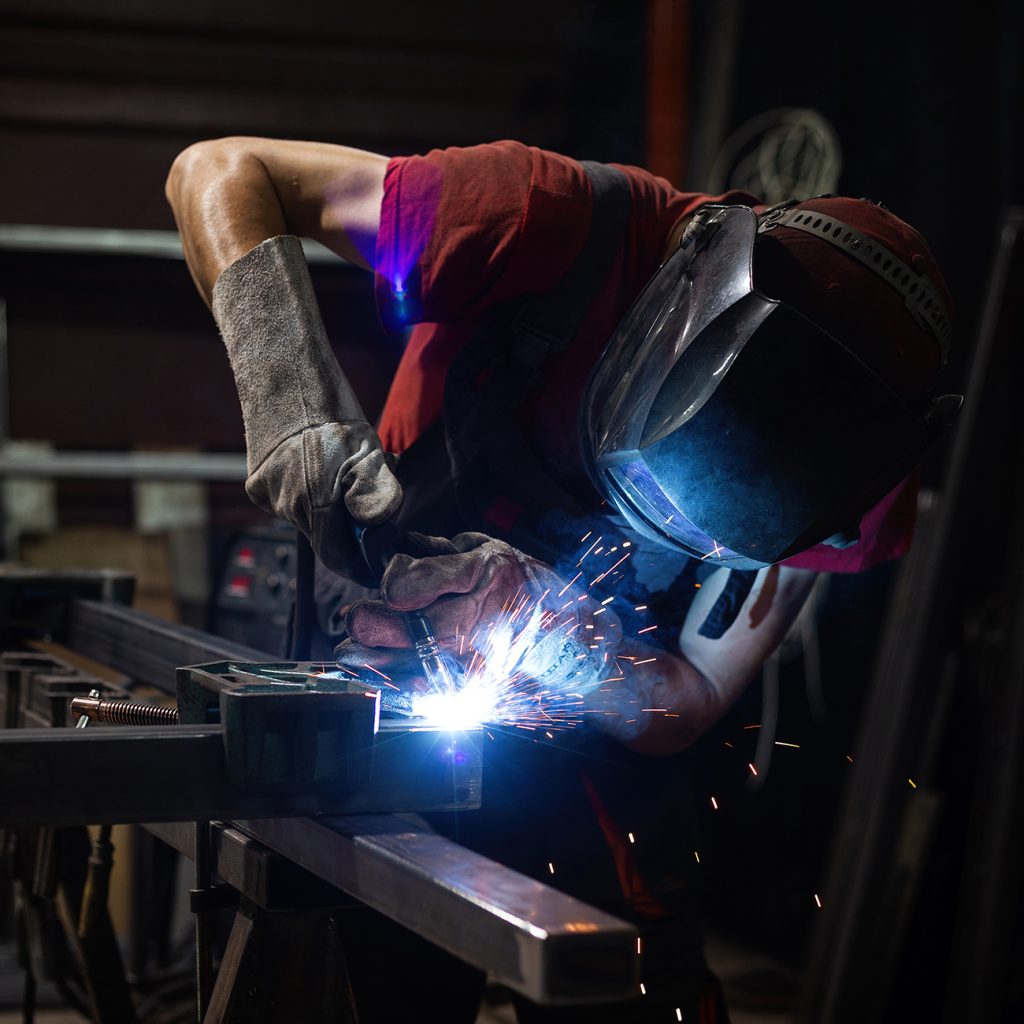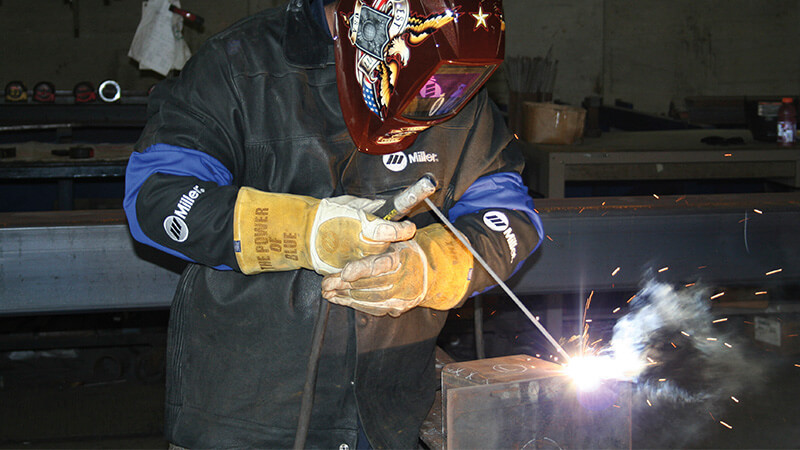What Belgrade Fabrication uses as go-to strategies for dealing with incomplete fusion
All Concerning Welding: Key Insights Into Techniques and Ideal Practices for Success
Welding includes a range of strategies, each fit for specific products and applications. Comprehending these methods, such as GMAW, SMAW, and TIG, is vital for accomplishing perfect results. The best devices and security methods can not be forgotten. As prep work and repairing play crucial duties in the welding process, understanding these elements can greatly improve the top quality of the end product. What are the key variables that ensure an effective weld?
Understanding Various Welding Techniques
Welding techniques include a variety of methods, each matched to specific applications and materials. Among one of the most typical methods are Gas Metal Arc Welding (GMAW), Shielded Metal Arc Welding (SMAW), and Tungsten Inert Gas Welding (TIG) GMAW, also understood as MIG welding, is prominent for its speed and convenience, making it suitable for thin products. SMAW, or stick welding, is preferred for its simpleness and performance in outdoor environments, specifically with thicker steels. TIG welding offers precision and control, making it suitable for intricate work and non-ferrous steels (Montana Mobile Welding and Repair). Each strategy has its special benefits and factors to consider, allowing welders to select the ideal approach based on the task's demands, material type, and wanted outcomes. Understanding these methods is crucial for successful welding
Essential Welding Equipment and Tools
While numerous welding methods call for certain skills, the ideal equipment and tools are just as necessary for accomplishing quality outcomes. Important welding equipment consists of welding equipments, which vary depending on the strategy-- such as MIG, TIG, or stick welding. Protective gear, including aprons, helmets, and handwear covers, assurances safety and security and comfort during the procedure. In addition, clamps and fixtures help safeguard products in area, making sure accuracy in welds. Consumables like welding poles, cable, and protecting gas are additionally critical components that affect the quality of the weld. Furthermore, devices such as mills and cutters facilitate surface area preparation and post-weld completing, contributing to an expert outcome. Investing in premium tools eventually enhances the performance and performance of welding projects.
Security Practices in Welding
Correct safety techniques are vital in the welding sector to shield workers from possible risks. Welders need to use ideal personal safety equipment (PPE), including safety helmets with proper shading, handwear covers, and flame-resistant garments. Adequate air flow is essential to lower exposure to hazardous fumes and gases created throughout the welding process. Furthermore, employees should be educated in the right handling of welding devices to stop accidents. Fire precaution, such as maintaining flammable products away from the welding location and having fire extinguishers conveniently offered, are needed. Normal examinations of tools and work spaces can assist identify possible risks before they result in accidents. By adhering to these safety and security practices, welders can produce a safer working atmosphere and reduce dangers connected with their trade.
Preparing Products for Welding
Preparing materials for welding is a vital action that considerably influences the high quality and integrity of the final item (Montana Mobile Welding and Repair Belgrade). Appropriate preparation entails cleaning up the surfaces to remove impurities such as rust, oil, and dust, which can endanger the weld. Strategies such as grinding, sanding, or utilizing solvents are commonly utilized to achieve a clean surface. Additionally, ensuring that the products mesh snugly is crucial; gaps can result in weak welds. It's also important to think about the alignment and positioning of the parts, as this will affect the convenience of welding and the last result. Picking the suitable filler material and guaranteeing compatibility with the base steels is essential for achieving strong, resilient welds.
Tips for Achieving High-Quality Welds
Accomplishing top notch welds needs interest to detail and adherence to best techniques throughout the welding process. Correct joint prep work is essential, ensuring surfaces are clean and cost-free from pollutants. Selecting the proper filler material and welding method based on the base steels is critical for suitable bonding. Maintaining consistent traveling speed and angle while welding can promote and stop flaws uniformity. Additionally, controlling warm input is important; excessive heat can lead to warping and damaged joints. Regularly examining the welds during the process enables prompt adjustments if essential. Using ideal post-weld therapies, such as cleaning and stress alleviation, can enhance the durability and stability of the weld, inevitably guaranteeing a successful end result.
Troubleshooting Typical Welding Issues
Welding often offers challenges that can affect the quality and stability of the final item. Usual issues such as porosity, inconsistent weld beads, and overheating can emerge, each needing certain troubleshooting techniques. Understanding these problems is vital for welders to enhance their skills and achieve excellent outcomes.
Porosity Troubles Explained
Although porosity can usually be ignored, it remains a vital problem in welding that can compromise the stability of an ended up item. Porosity describes the presence of small gas pockets within the weld grain, which can lead and damage the joint to early failing. This problem normally develops from contaminants, wetness, or incorrect protecting gas protection during the welding process. To reduce porosity, welders ought to confirm that the base materials are tidy and completely dry, make use of ideal securing gases, and keep constant welding parameters. Regularly examining the tools and setting can additionally assist recognize prospective issues before they manifest in the weld. Attending to porosity properly is crucial for achieving solid, durable welds that satisfy high quality criteria.

Irregular Weld Beans
Inconsistent weld grains can greatly affect the top quality and strength of a completed item. Different aspects add to this concern, consisting of incorrect traveling rate, wrong amperage setups, and inconsistent electrode angles. When the welder relocates too rapidly, a grain might appear slim and do not have penetration, while moving as well slowly can create extreme buildup. Additionally, making use of the wrong amperage can cause either damaging or excessive spatter, both of which compromise weld honesty. The welder's method, such as inconsistent torch activity, can likewise lead to uneven grain look. To alleviate these troubles, welders need to concentrate on preserving constant, controlled movements and ensuring appropriate tools setups to accomplish uniformity in their welds. Uniformity is vital to achieving reliable and strong welds.
Getting Too Hot and Warping Issues
Too much warm throughout the welding procedure can bring about substantial overheating and warping concerns, influencing the structural honesty of the workpiece. These problems typically show up as distortion, which can endanger placement and fit-up, making more assembly challenging. Factors contributing to overheating consist of the selection of welding parameters, such as voltage and take a trip speed, in addition to the type of material being welded. To alleviate these issues, welders ought to preserve regular traveling speed and appropriate warm input while monitoring the workpiece temperature. In addition, preheating or post-weld warm therapy can aid reduce stress and anxieties triggered by fast cooling - Montana Mobile Welding and click here Repair Welding. Regular examination and adherence to best methods are necessary in protecting against overheating and making sure the longevity and dependability of welded frameworks
Frequently Asked Questions
What Are the Profession Opportunities in the Welding Sector?
The welding market offers diverse career possibilities, including placements as welders, designers, assessors, and instructors. Experts can work in manufacturing, building, aerospace, and automotive fields, taking advantage of strong need and affordable salaries in different functions.
How Can I Improve My Welding Speed Without Compromising Quality?
To improve welding rate without sacrificing quality, one ought to exercise effective methods, maintain devices, enhance settings, and enhance hand-eye control. Routine training and looking for responses can also significantly contribute to achieving much faster, top quality welds.
What Qualifications Are Readily Available for Welders?
Countless certifications exist for welders, consisting of those from the American Welding Society (AWS), the National Facility for Building And Construction Education and Research (NCCER), and numerous industry-specific organizations. These credentials enhance employability and show skill efficiency.
How Does Welding Influence the Residences of Metals?
Welding influences the residential properties of metals by modifying their microstructure, which can lead to modifications in stamina, solidity, and ductility. Warmth input and air conditioning prices during the process considerably influence these material attributes.
Can I Weld Dissimilar Metals With Each Other?
